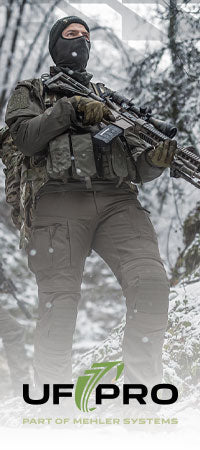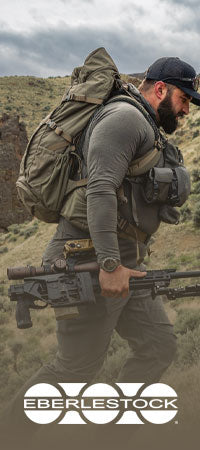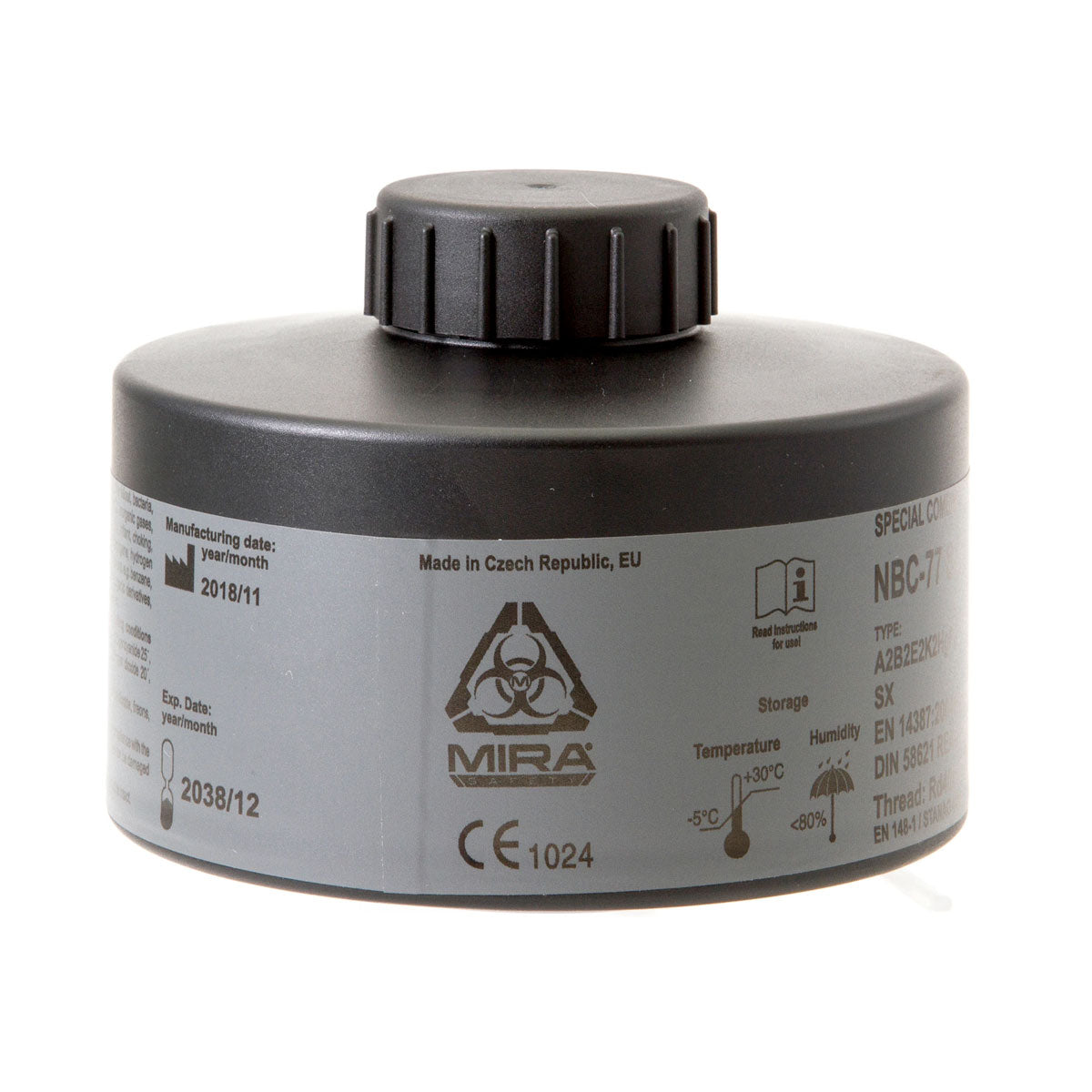
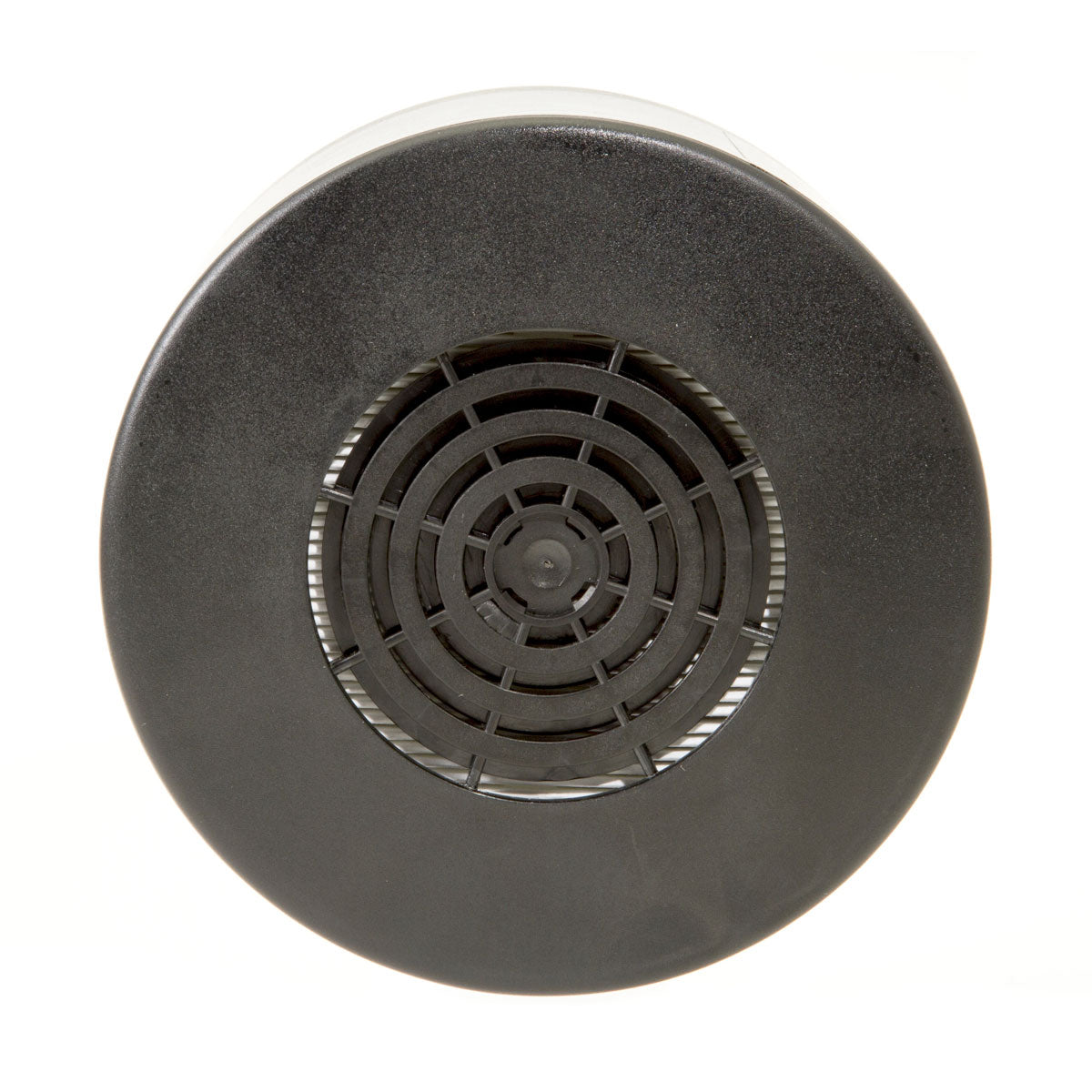
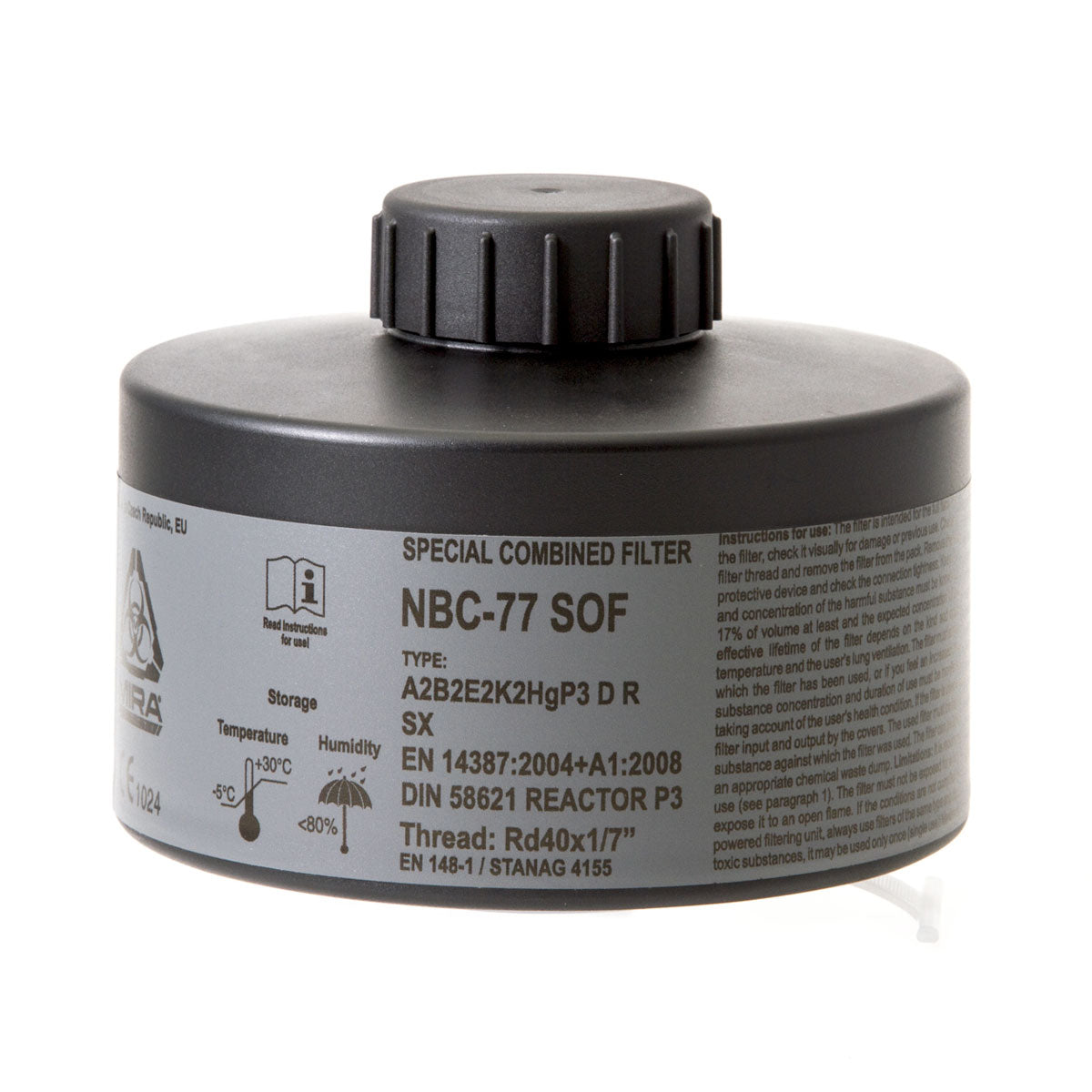
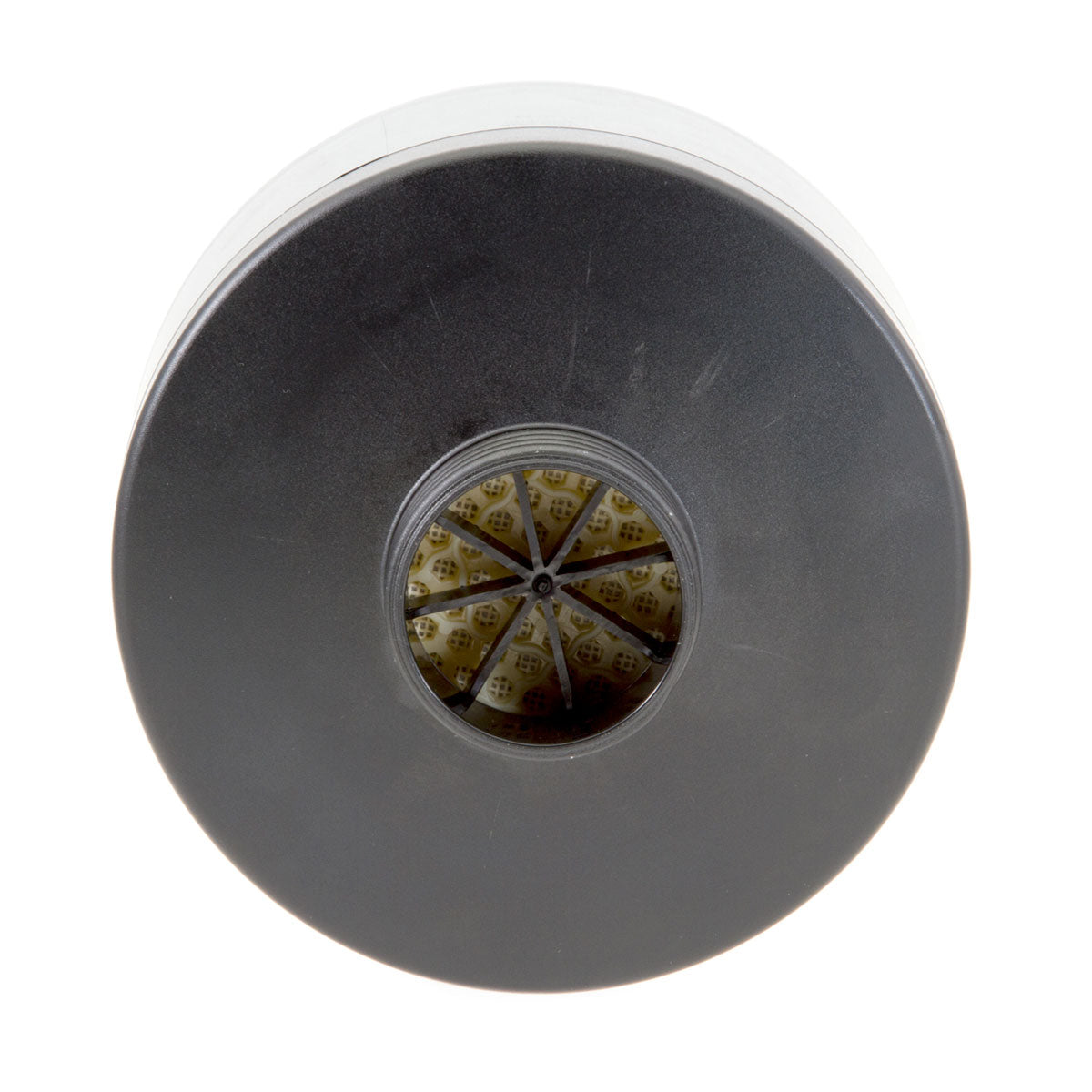
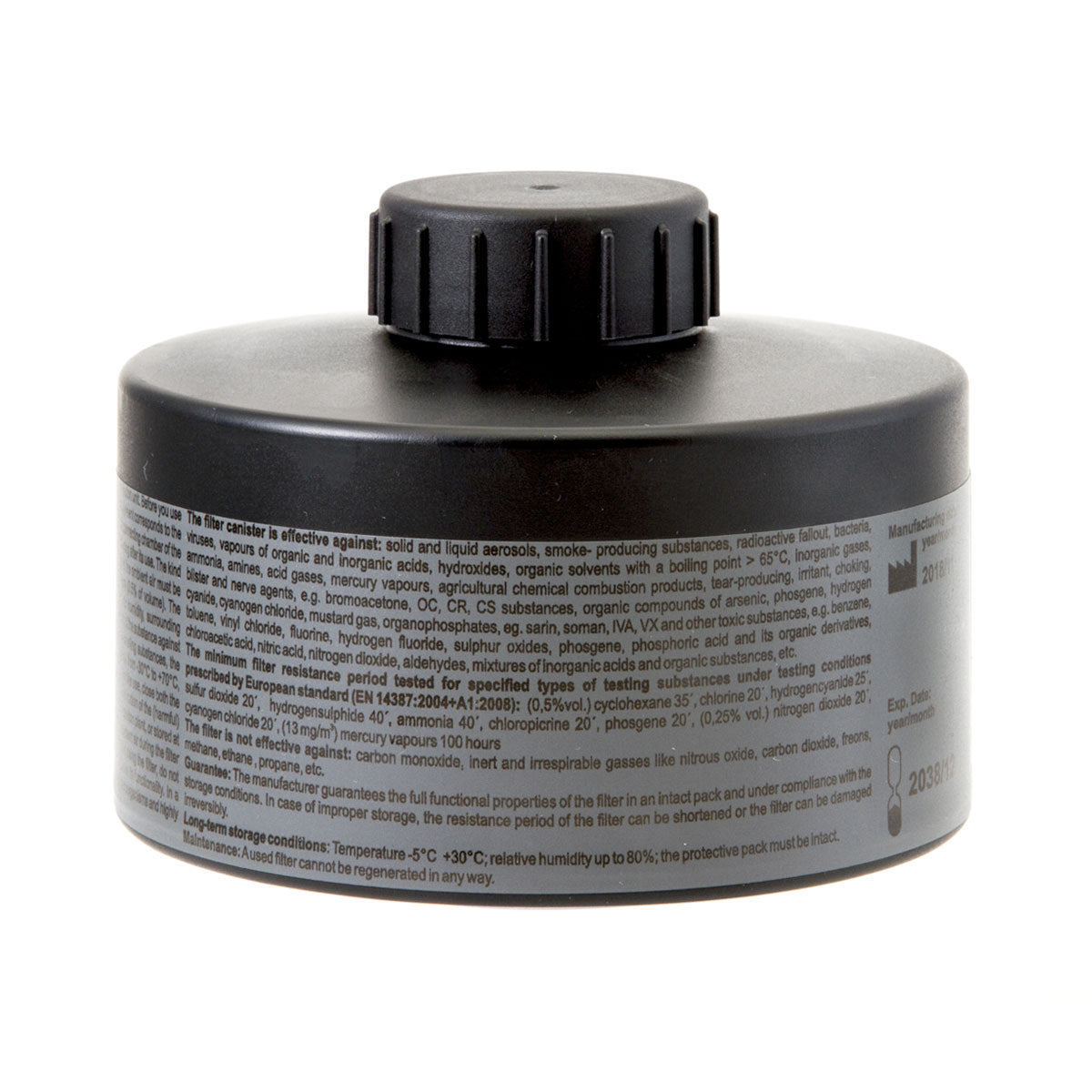
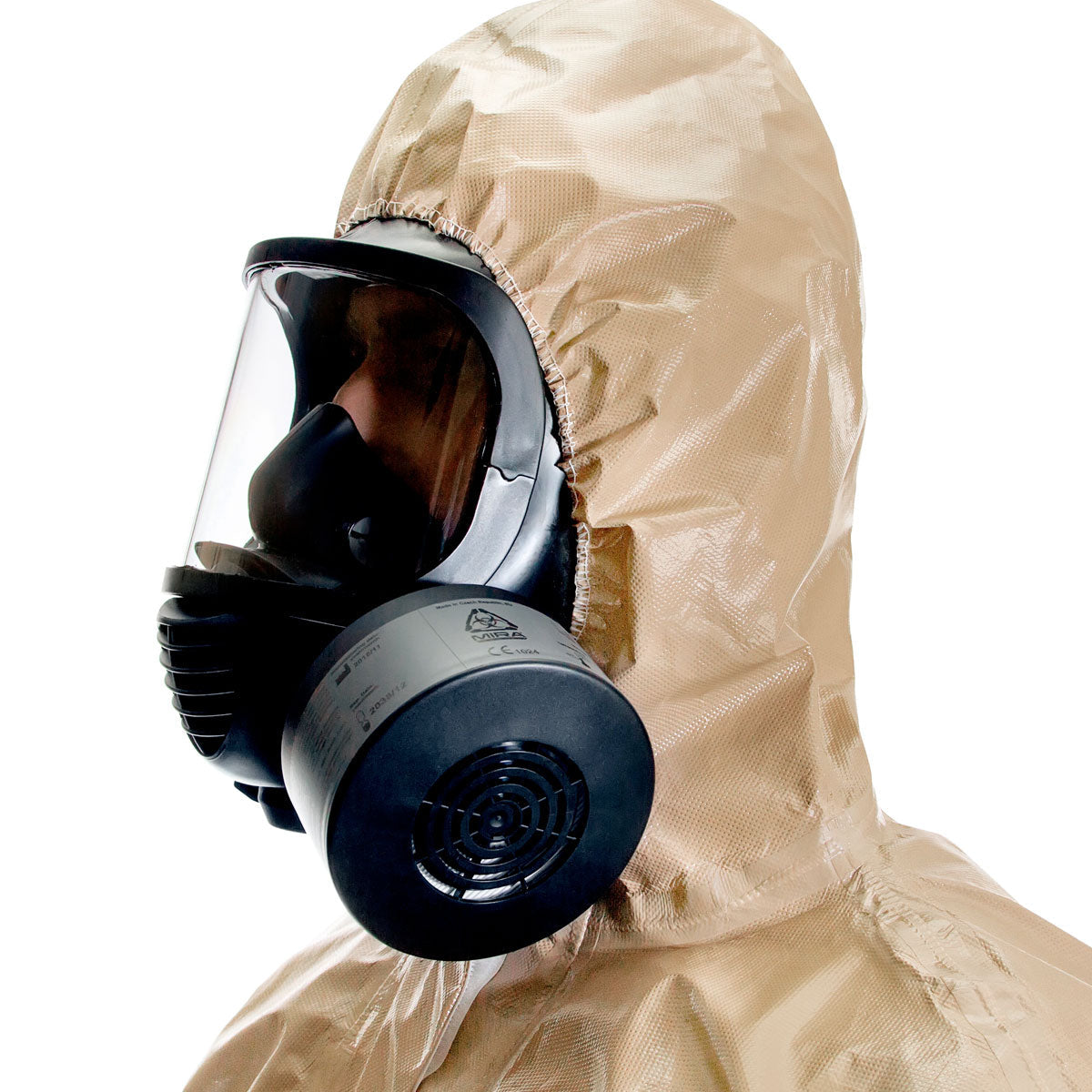
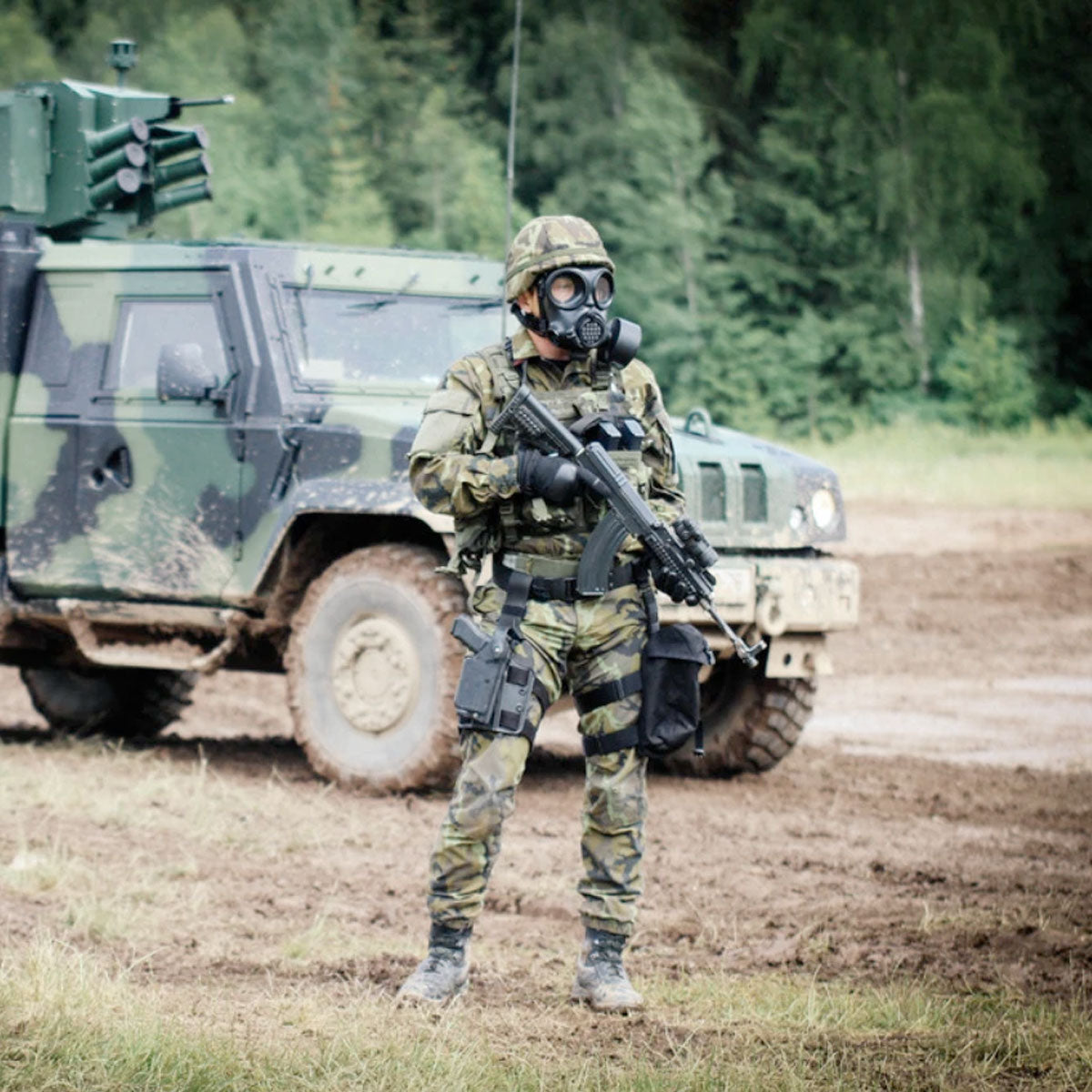
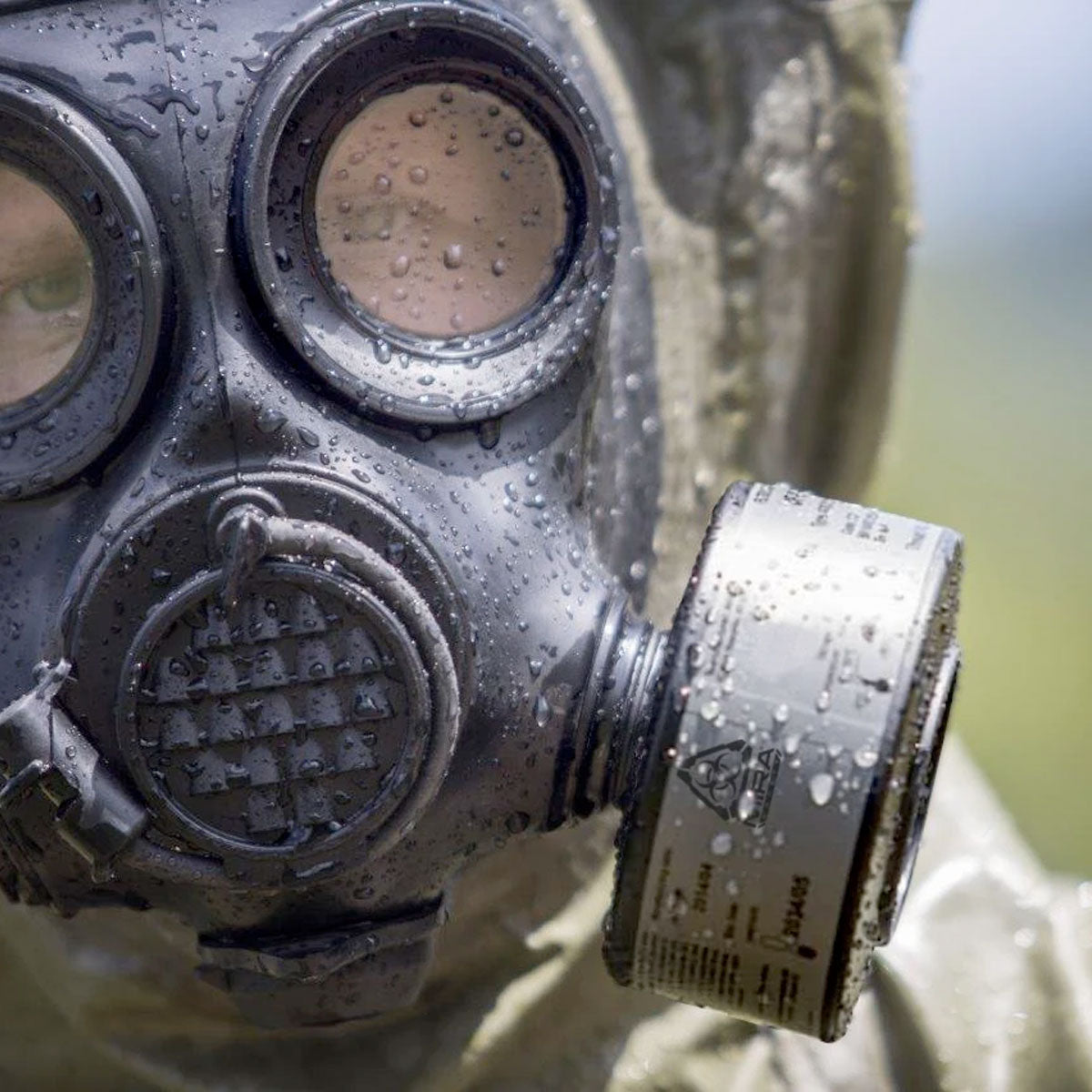
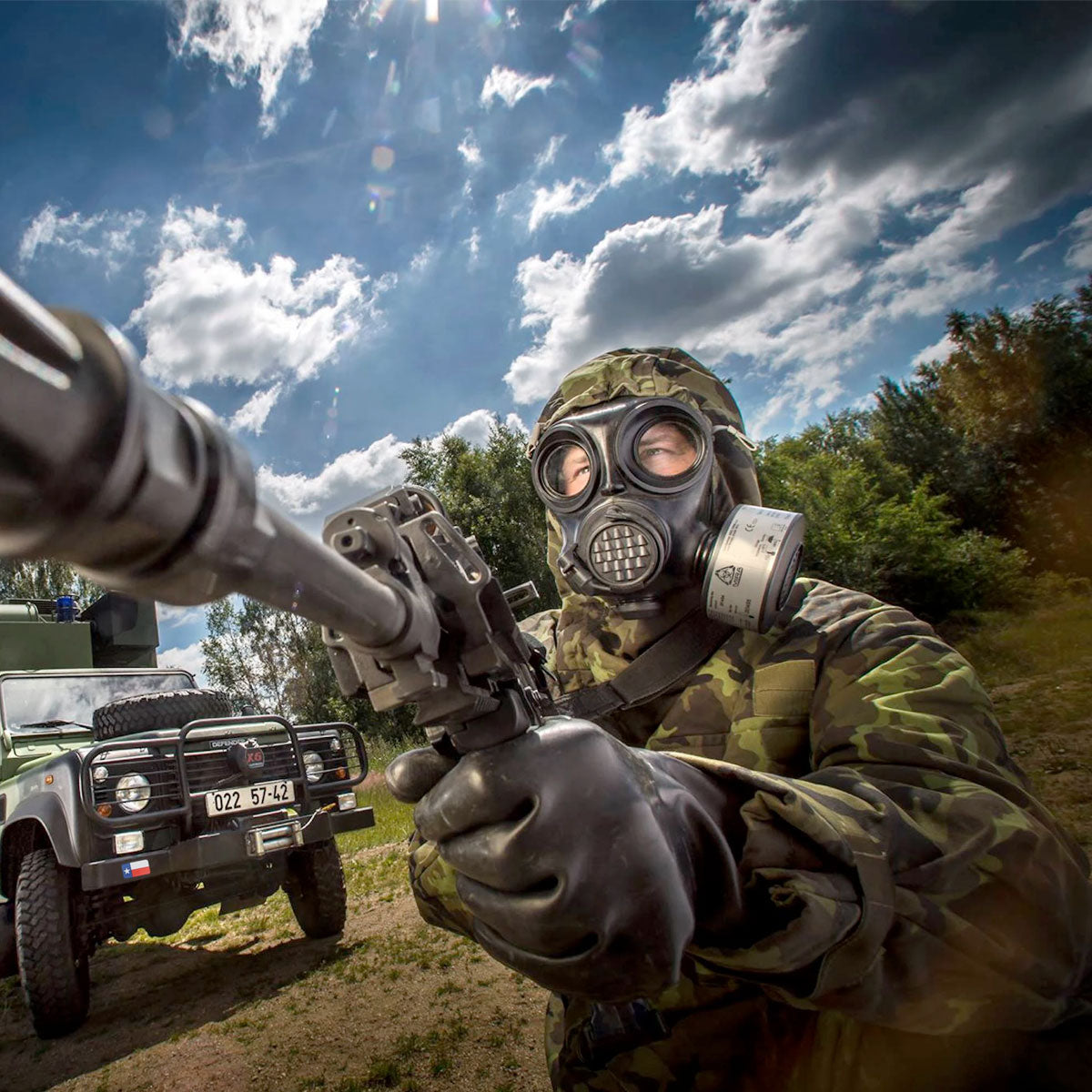
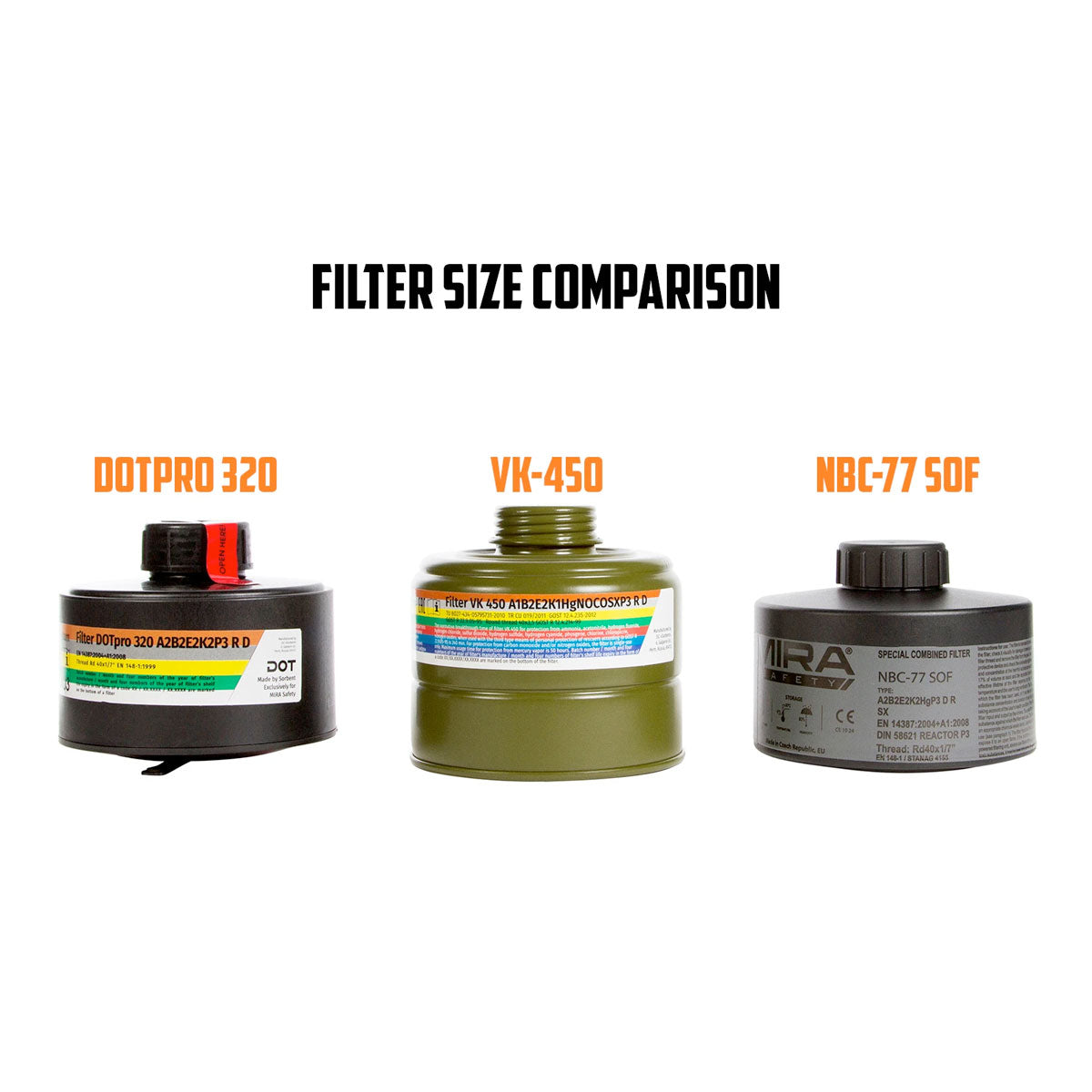
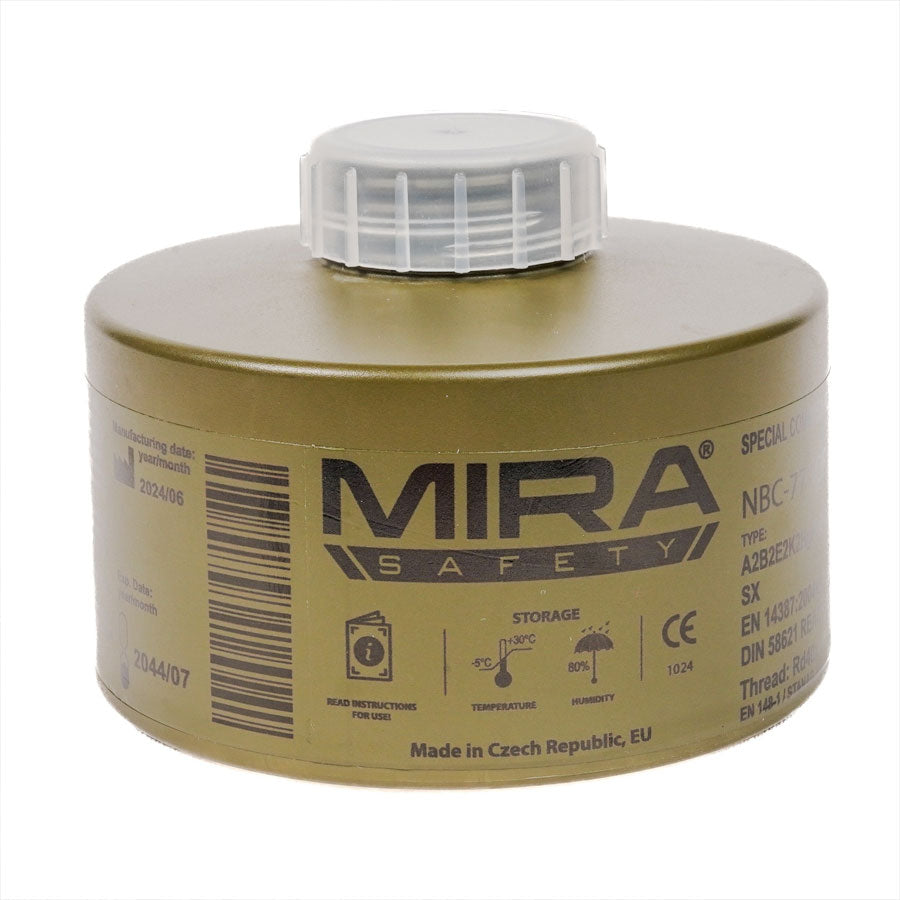

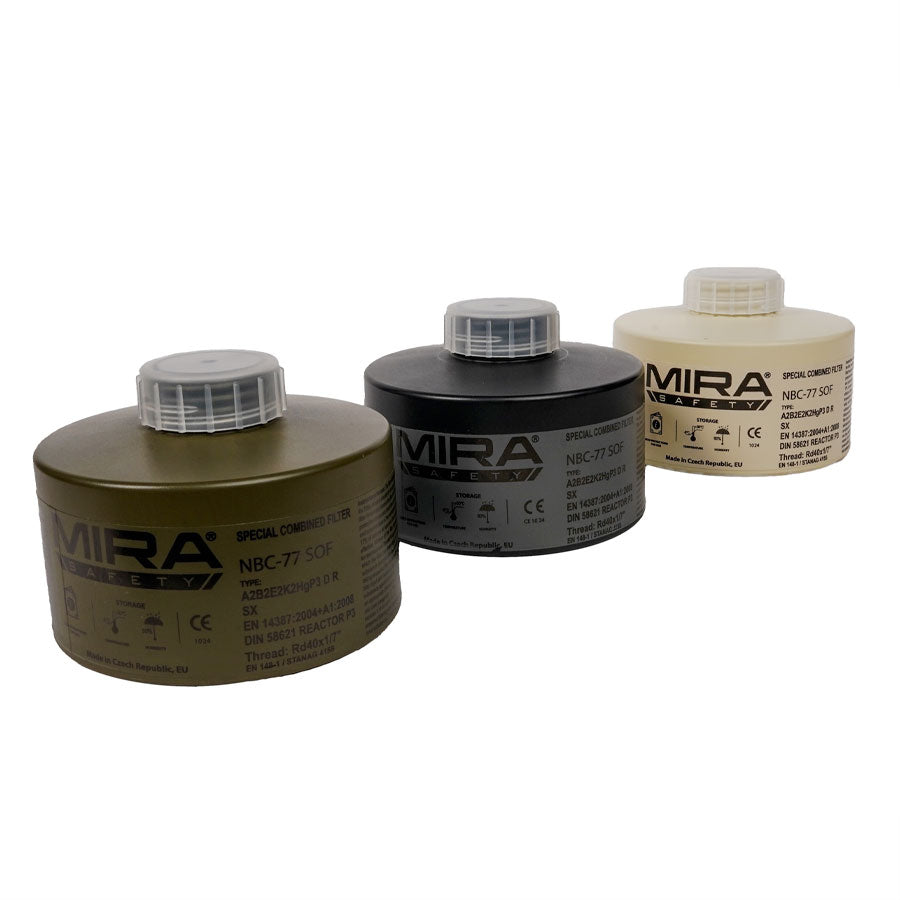
MIRA-NBC77SOF-BLACK
Mira Safety CBRN Gas Mask Filter NBC77 SOF 40mm Thread Canister
Shipping & Returns
Tactical distributors Pty Ltd (Tactical Gear) ships from various warehouses throughout Australia and the United States. Shipping timelines are specified on each product page.
FILTRATION TECHNOLOGY YOU CAN DEPEND ON
The NBC-77 SOF filter canister, in combination with a full-face mask, mouthpiece assembly, or PAPR, reliably protects air passages against a wide range of harmful and highly toxic substances including all known CBRN agents.
The filters are produced with standard round threads according to STANAG 4155 (EN 148- 1)- Rd 40x1/7". The filter components are made of hard plastic. This results in a very robust product that is extremely durable against shock and impact damage in operational use.
Features of Mira Safety CBRN Gas Mask Filter NBC77 40mm Thread Canister
- Compatible with standard 40mm NATO threaded respirators, which are widely available.
- 20-year shelf life - save money long-term by not having to replace your filters every 5 years
- Used by military personnel, CBRN specialists, and special operations forces all over the world
- Filter all known CBRN agents, including radioactive iodine, rated for A2B2E2K2HgSXP3 D R.
- Certified by European agencies and has the “CE” symbol. Compliant under EN 14387:2004 + A1:2008
| Technical Data | Breathing Resistance in Pa | ||
|---|---|---|---|
| Diameter | 110 mm | @ flow rate 30l/min. EN 1) NBC-77 SOF 260 <140 | @ flow rate 95l/min. EN 1) NBC-77 SOF 980 <600 |
|
Height |
85 mm | ||
| Weight | 335 g ±5% | ||
| Storage time | 20 years (factory sealed) | ||
| Type and Class Particle filter efficiency @ flow rate 95l/m | Particle filter efficiency @ flow rate 95L/M | |||
|---|---|---|---|---|
| A2 - organic gases and vapors | SX - CG, CK, PS | Sodium Chloride NaCl (S) Paraffin oil (L) | EN 99.95 99.95 | NBC-77 SOF >99.999 >99.999 |
| B2 - inorganic gases and vapors | P3 - particles | |||
| E2 - acid gases and vapors | D- dust | |||
| K2 - ammonia and amines | R- reusable | |||
| Hg - mercury vapors | REACTOR - radioactive iodine | |||
Application
The filter canister in connection with a suitable respirator or PAPR provides protection against solid and liquid particles, pepper spray (OC), smoke-producing substances, radioactive particles, bacteria and rickettsia, fungi, toxins, viruses, riot control agents (lachrymators, sternutators, vomiting agents), blister agents (vesicants), choking agents, blood agents, nerve agents, incapacitants, herbicides, pesticides, and TIC, such as bromoacetone, CS, CR, CN, CNC, CNS, CA substances, organic compounds of arsenic - diphenyldichlorarsine - CLARK I (DA), diphenylcyanoarsine - CLARK II (DC), adamsite (DM), diphenyldichlorarsine (DA), ethyldichlorarsine (ED), methyldichlorarsine (MD), mustard gas (H), sulphur mustard gas (HD), T-mustard gas, Q-mustard gas, nitrogen mustard gases (HN1, HN2, HN3), lewisite (L), mixed mustard gas (H-L), phosgene oxime (CX), phosgene (CG), diphosgene(DP), chloropicrin (PS), hydrogen cyanide (AC), cyanogen chloride (CK), arsine (SA), G-agents: sarin (GB), cyclosarin (GF), soman (GD), tabun (GA), IVA (GV), V-agents: VX, VR, VE, VG (amiton), VM and toxic industrial chemicals such as: fumes of organic or inorganic acids, hydroxides, organic solvents with a boiling point above 65° C, ammonia, amines, inorganic and acid gases, agricultural chemical combustion gases, other toxic substances, e.g. benzene, toluene, vinyl chloride, fluorine, hydrogen fluoride, sulphur oxides, chloroacetic acid, aldehydes, mixtures of inorganic acids, and organic substances, mercury vapors, radioactive iodine, organic compounds of iodine (Iodomethane, 129, 131), radioactive particles, etc.
| Testing Gas | Concentration of Testing Gas | Breakthrough Time in Minutes EN | NBC-77 SOF | DAC in Grams NBC-77 SOF | ||||
|---|---|---|---|---|---|---|---|---|
| PPM | MG/I | |||||||
| A2 | Cyclohexane | C₆H₁₂ | 5000 | 17.5 | 35 | 39 | 20.475 | |
| B2 | Chlorine | Cl₂ | 5000 | 15 | 20 | 45 | 20.250 | |
| Hydrogen Sulphide | H₂S | 5000 | 7.1 | 40 | >80 | >17.400 | ||
| Hydrogen Cyanide | HCN | 5000 | 5.6 | 25 | 50 | 8.400 | ||
| E2 | Sulphur Dioxide | SO₂ | 5000 | 13.3 | 20 | 25 | 9.975 | |
| K2 | Ammonia | NH₃ | 5000 | 3.5 | 40 | 50 | 5.250 | |
| Hg | Mercury | Hg | ----- | 13 mg/m³ | 100 hours | >170 hours | >3.900 | |
| SX | Cyanogen chloride | CICN | 2500 | 6.28 | 20 | 25 | 4.710 | |
| Chloropicrin | CCI₃NO₃ | 5000 | 33.55 | 20 | 44 | 44.286 | ||
| Phosgene | COCl₃ | 5000 | 20.24 | 20 | >77 | >47.058 | ||
| REACTOR | Methyloidide₁₃₁ | CH₃I | - | 2 hours | >2 hours | - | ||
Lifetime
Breakthrough time of a filter is tested according to EN 14387+A1 at humidity 70% and flow rate 30 l/min, which is equivalent to the volume of air per minute used by an average person carrying out medium heavy work. The approximate lifetime (usage time) of a filter may, under normal conditions, calculated by comparing the concentration at the workplace and the minimum Dynamic Adsorption Capacity (DAC) for the filter.
Storage and Maintenance
The filters are sealed in plastic bags by the manufacturer. Store the filters unopened in a clean place at even temperature, most appropriate at -5 to +30°C and relative humidity below 80%. Sealed filters tolerate also conditions of -30 to +50°C and RH below 95%. The storage period (month and year) for filters is marked on the filter label. Do not try to regenerate the filters. Never clean the filters with compressed air or compressed water.
Disposal
After use, the filters are special refuse. Make sure that they are disposed of according to the filtered substance (gases or particles) in accordance with current waste treatment regulations. If the product is to be disposed of, it should be dismantled from the respirator and disposed of as solid waste. Please see local authority regulations for disposal advice and locations.
Click here to download the Brochure
Questions and Answers
Q: I am aware that a P3 filter is required to block the coronavirus. Which one of your filters is P3?
A: MIRA Safety filters (NBC-77 SOF, VK-450, DOTpro 320) are classified as "combined filters" and contain a P3 filter along with activated carbon. For those that don't know what P3 means, it is a rating for a particle filter that blocks 99.9999%+ of particulates. As viruses travel in liquid aerosols and particulates, this filter (when coupled with a full face respirator) would prevent the coronavirus from entering your breathing passages and eyes.
Q: How long does a filter last once it's opened?
A: Filter use time depends on a few factors, including atmospheric conditions, contaminant type, concentration, along with your breathing rate. As a general rule of thumb, we would suggest having two filters per person per day for emergency evacuation purposes. If you'd like specific data on use time, you can look at the brochure that goes into breakthrough times along with the application.
Q: Would this be compatible with the North by Honeywell Small Elastomer Full Face 5400 Series Dual Cartridge Facepiece?
A: For viral filtration, you would need a P3 particle filter (all of our filters have a P3 built-in). As all of our filters are threaded for 40mm NATO, they will all fit the MSA Millenim mask.
Q: What level filter will protect me from the Coronavirus and will this filter fit the MSA millennium gas mask?
A: For viral filtration, you would need a P3 particle filter (all of our filters have a P3 built-in). As all of our filters are threaded for 40mm NATO, they will all fit the MSA Millenim mask.
Q: Does this filter fit the Polish MC-1 gas mask?
A: Yes, it does, so long as it's in 40mm NATO configuration. As this is an old mask it might be threaded in 40mm Soviet GOST. Make sure to double-check before making a purchase.
Q: Will these filters work with an Avon C50 to provide proper CBRN threat protection?
A: Yes, they will, as both are threaded for 40mm NATO.
Q: Will these filters fit on Soviet GP5 gas masks?
A: No, they will not, as they are threaded for 40mm NATO, and the GP5 is threaded for old-style 40mm GOST.
Q: Will these filters fit Israeli gas masks?
A: Yes, they will, as both are 40mm NATO threaded.
Q: How to properly clean the mask? How to properly dispose of a used filter? For both, in a case where you may fear you were in a contaminated area.
A: There are many cleaning products on the market for gas masks, and each is created for different purposes. As decontamination is a field of study on its own, we would suggest doing independent research and training before purchasing cleaning products. For viral threats, we have heard that Allegro 5003-U is a good product from industry experts. We do not sell it on our website, but you can find it in shops across the web. Filter disposal would depend on local laws for toxic waste disposal. Please check with local authorities as laws differ from county to county, state to state, and country to country.
Q: Why are these masks not NIOSH approved? Is it primarily because of geographical usage?
A: Precisely. Traditionally, these masks were used by professionals in the EU, the middle east, along with eastern-European counties. Both the CM-6M and CM-7M are EN 136 CL 3 (special purpose) certified. If you look through and compare NIOSH testing to EN, you will see that EN standards are just as stringent as their NIOSH counterparts. NIOSH does not determine quality by any means, just an extra piece of certification as mandated by OSHA for private sector professional use. Keep in mind, government-owned agencies are not subject to OSHA and can use non-NIOSH masks/filters. This includes police, fire brigades, first responders, etc. All of which are our customers in the US.
Q: How long will a NBC-77 SOF filter protect in non-contaminated air against viruses?
A: As viruses travel in particles and liquid aerosols, this filter will protect you for as long as you can wear the mask (several days). Keep in mind; if you are in a contaminated environment, you would need to decontaminate properly before removing your protective gear, and then dispose of the filter as there is no way to regenerate it. Once the filter is used in a contaminated environment, it is considered toxic waste.

